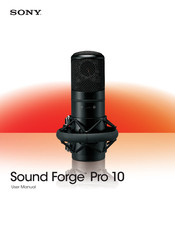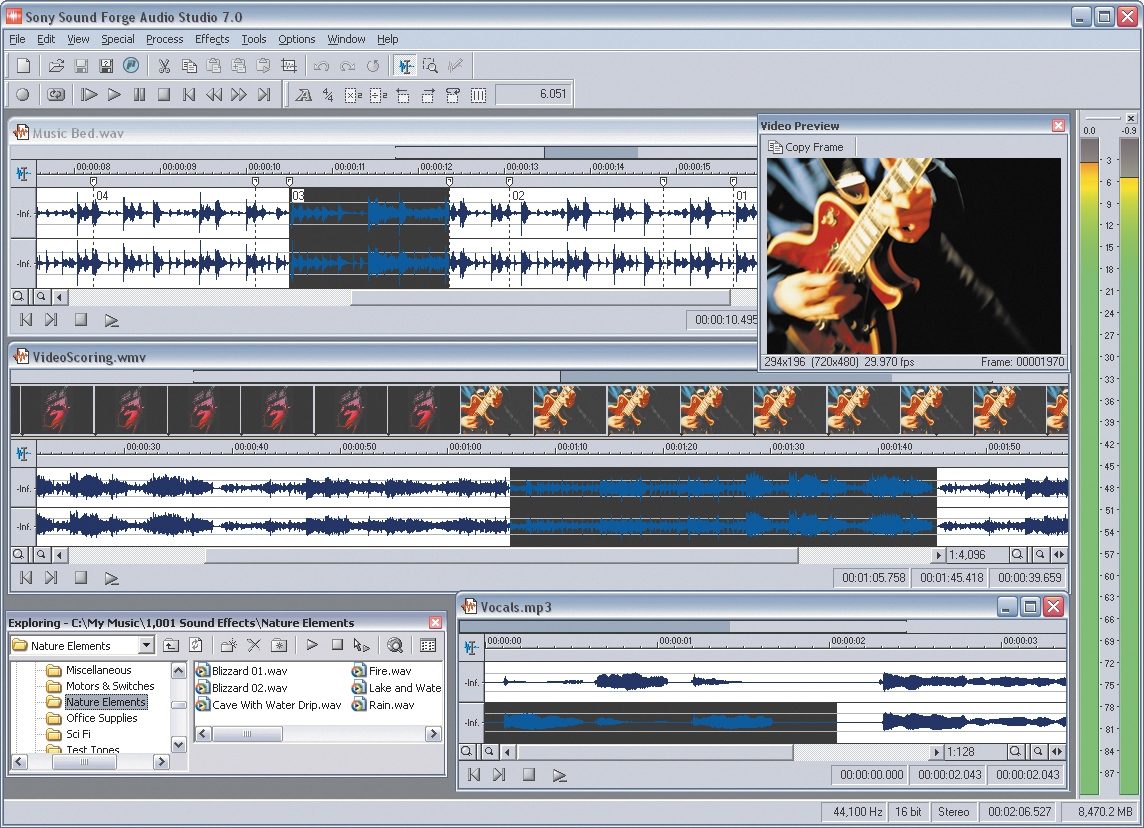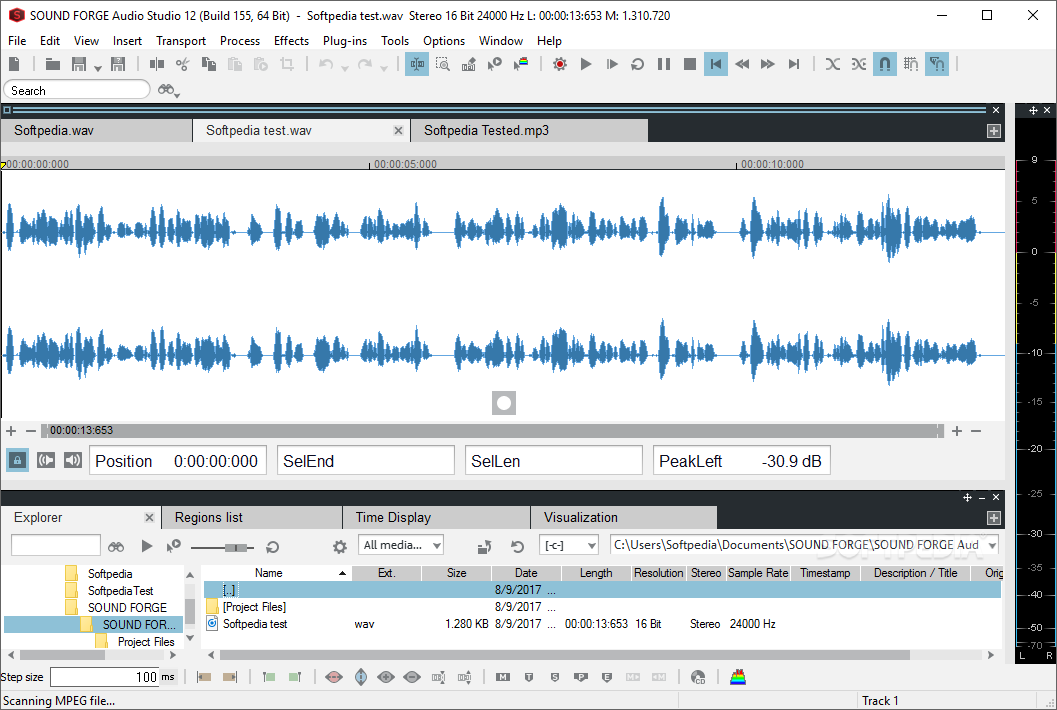
But, I don't want to Ctrl+V, I don't want to just paste. So, I've got my playhead right at the beginning of the clip and then, I want to paste into it. We'll go over to the Office 2 clip now and I want to position the playhead where I'd like the paste to begin. And I can do that by going to the edit menu and selecting copy or simply Ctrl+C. Just create a loop region, by dragging it across all of my channels and then, I'm going to copy it. Now, I'm going to select a portion of my music clip, maybe about a minute of it. > And now we'll jump to our second clip delayed goodbye, which is a music clip and it sounds like this. > You know I'm taking a big risk putting you on. I'm certainly not going to save over my original file but that's so that we're to the point here where the dialogue starts. Okay, so I'm just going to select that area as a loop region and click delete to get rid of it. Right up to the point where, we can hear dialogue. And just to keep things nice and neat, I'm going to trim off part of it here. I'm going to go over here to the, Office clip here first, which is my dialogue clip.

However in Sound Forge, we can combine several separate audio clips into a single audio recording and I'll show you how that's done. We can only work usually with one source at a time.

In other words, if you've got a recording of a guitar and base and drums and piano, you can't really mix those sources together well in Sound Forge.

That means you can't use it very effectively to mix several separate audio recordings. Sound Forge is a single track audio editor.


 0 kommentar(er)
0 kommentar(er)
